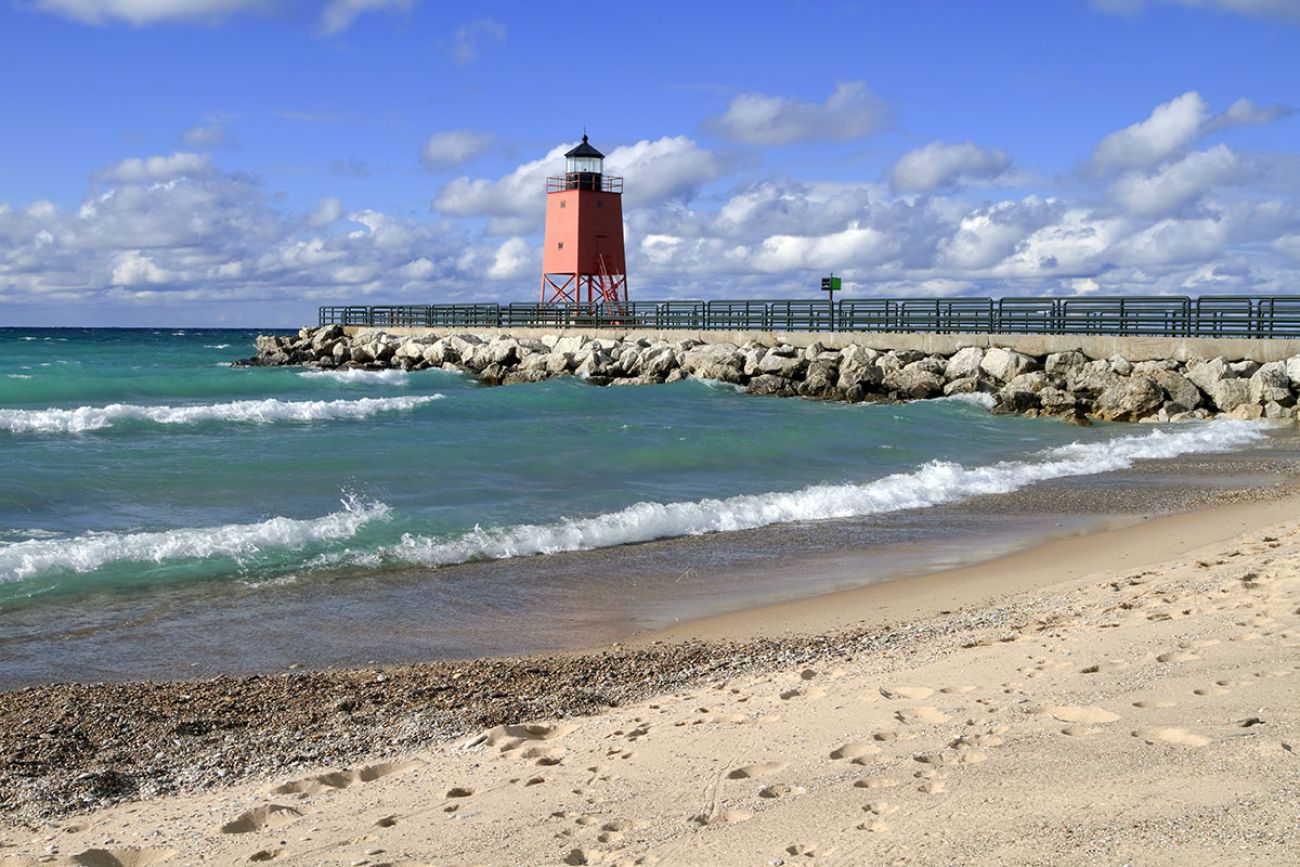Great Lakes drownings on rise. Here’s how to protect yourself at the beach

- A 23-year-old Ohio man became the 12th person to drown in Lake Michigan this year, and the 32nd to drown in the Great Lakes
- With water temperatures reaching comfortable levels across Michigan, more people are heading to the beach
- If someone is drowning, they should “flip, float and follow,” or turn onto their back and float with the current
A dip in Lake Michigan turned fatal for an Ohio man Wednesday morning, with the 23-year-old becoming the 12th person to drown in Lake Michigan this year, and the 33rd in the Great Lakes.
That’s down from last year, when there were 53 drownings in the Great Lakes by the Fourth of July. There were 36 by Independence day in 2021. There were 108 drownings over all of 2022 in the Great Lakes, and 101 in 2021.
Wednesday’s drowning occurred near Manistee, when family members noticed the man was struggling in the water. Family members pulled him from the water and began to administer CPR. When Fire and Rescue arrived, they took over life saving efforts, taking the man to the hospital where he was pronounced dead.
Related:
- Watch out! Creepy kudzu coming to Michigan?
- Free swim lessons part of larger Michigan effort to reduce drownings
- How to feed a crew on a Great Lakes freighter: haute cuisine on the high seas
Fatal drownings rise with water temperatures. Lake Michigan saw water temperatures in the low 70s in Holland. Lake Erie experienced similar conditions, while Lake Huron saw temperatures in the low 60’s. According to the National Centers for Environmental Information, most people feel comfortable in water over 70 degrees.
To Dave Benjamin, co-founder and executive director of the Great Lakes Surf Rescue Project (GLSRP), an organization with a mission to eradicate drownings in the Great Lakes through public education, higher water temperatures mean people will be getting into the water faster, and staying longer. According to Benjamin, drowning is a public health issue, and the World Health Organization agrees with him. Benjamin believes the key to reduce them is by establishing a mandated water safety curriculum in schools.
“We have fire drills, tornado drills, school shooter drills, even earthquake drills … there hasn’t been a fatal earthquake in my lifetime,” Benjamin told Bridge Michigan Thursday. “But my kids are doing earthquake drills and all of these other drills, over water safety. Water safety school curriculum would be the fastest approach, to reach the widest audience in the shortest amount of time.”
Benjamin offered tips to stay safe at Michigan beaches:
Drowning survival strategy
GLSRP is educating the public on proper ‘drowning survival strategy’, or ‘flip, float and follow.’
“You flip over on your back and you float, to keep your head above water, to calm yourself down from the fear and panic of drowning, and to conserve your energy,” Benjamin said.
Check for lifeguards
While Benjamin says that a lack of understanding about water safety plays a large part in the drownings that take place in the Great Lakes each year, he also said that there are many institutional issues that contribute to the problem as well. Mainly, a lack of lifeguards at Michigan beaches.
The state of Michigan operates a dozen state parks with beaches, none of which have had lifeguards since 1993. Lake Michigan has only two beaches with lifeguards, both in southwest Michigan: Silver Beach in St. Joseph and New Buffalo Beach.
“When people are going to the beach, they should always swim at a lifeguarded beach,” Benjamin said. “Unfortunately, that’s not going to happen in Michigan.”
Know hazard flags
Benjamin says that lifeguards are important for providing on-hand assistance to those who are drowning, but for other reasons as well. Michigan has a four-flag system to tell the public about water conditions at the beach. A green flag means low hazard, yellow means medium hazard, red mens high hazard, and a double red flag means that water access is closed.
“Beach flags are a tool for lifeguards to use, and not a replacement for lifeguards,” Benjamin said.
Benjamin said that without lifeguards present, the flag system isn’t updated in real-time, which means that water conditions can change rapidly while flags remain unchanged.
Designated water watcher
Benjamin recommends beachgoers designate a “water watcher” while enjoying the lakes.
“This should be an adult responsibility … this is an adult's job, 18 years and older,” Benjamin said. “There should always be eyes on the water, hands-on supervision of all young swimmers.”
The water watcher should not only be monitoring those swimming, but keeping an eye on general water conditions as well.
Benjamin also reminded people that drowning might not look like how it does in movies and T.V., and that many people who are drowning cannot scream or wave for help.
Stay safe out there
For those hoping to dive into the Great Lakes during the summer, Benjamin encourages them to educate themselves and to be careful. He recommends the use of U.S. Coast Guard approved life jackets, and to always keep an eye on the water.
Michigan Environment Watch
Michigan Environment Watch examines how public policy, industry, and other factors interact with the state’s trove of natural resources.
- See full coverage
- Subscribe
- Share tips and questions with Bridge environment reporter Kelly House
Michigan Environment Watch is made possible by generous financial support from:
Our generous Environment Watch underwriters encourage Bridge Michigan readers to also support civic journalism by becoming Bridge members. Please consider joining today.
See what new members are saying about why they donated to Bridge Michigan:
- “In order for this information to be accurate and unbiased it must be underwritten by its readers, not by special interests.” - Larry S.
- “Not many other media sources report on the topics Bridge does.” - Susan B.
- “Your journalism is outstanding and rare these days.” - Mark S.
If you want to ensure the future of nonpartisan, nonprofit Michigan journalism, please become a member today. You, too, will be asked why you donated and maybe we'll feature your quote next time!






